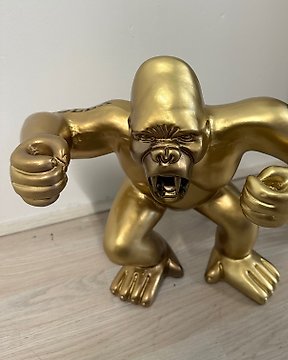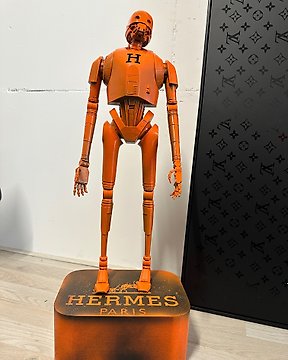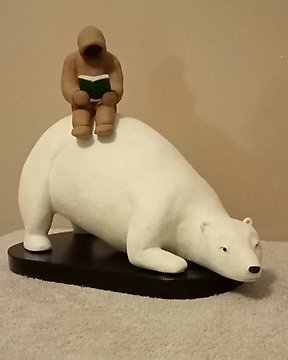Paul Janssen (1963) - Untitled
Nr. 84503215

Udo Brahler - Crucifixion
Nr. 84503215

Udo Brahler - Crucifixion
A large triptych by Dutch artist Udo Brähler (1940 - ) Hommage to Rogier van der Weijden. Mixed media, with an overlay of epoxy. Comes with the certificate attacjed to the back.
The panels are in good condition with some minor flaws.
On last two pictures we've placed some furniture for the viewer to get a good idea of the size of the panels.
''The symbolism of the painting has to do with Rogier van der Weyden, a painter from the Renaissance, a period of great innovations in Europe in the 15th/16th century. During this period, people increasingly became central, externally and internally. RvdW depicted the crucifixion lifelike, in a way that made it easy for the viewer to identify with it. For example, the figures in the original are painted at full size and can step off the canvas. This connection of a sacred moment with the raw society fascinated me. This is reflected in my triptych, where the images such as pin-up, runway, etc. symbolize our lives in these stormy times. It is Holiness that descends into our daily existence.''
As for the technique: the painting is made up of canvas on panel and a collage of strips of poster. It was painted over with acrylic paint. With epoxy (casting resin) you achieve a certain alienation, stronger colors and depth.
Udo Brähler worked in advertising from the 60s to early 90s where he worked on interesting concepts with a team. ''With advertising you create a dream, you create new identities. Good brands are creatures that you create. We were disciples of the consumer society. And consuming was nice. Eating what you wanted to eat, going to a supermarket, and buying a car were nice things. Buying had to do with freedom. But that has changed. In the mid-80s it became increasingly clear to me that life was no longer exciting. There was a boredom with prosperity. Me too.”
In 1990 he sold the business and in 1995 Udo Brähler became a full-time artist. It was an adventure. A search in which he didn't really know where the future would take him.
“I wanted to work from the inside instead of the outside. It was challenging, but I was also afraid of the process you go through as an artist. If you start peeling everything away, the fear is that you will become a kind of Diogenes: smart but without illusions, and end up in a barrel on the street. I was no longer the sociable, cheerful man that I was, I thought of myself as a woman. I didn't actually think I had changed, but I had become more introverted, more concerned with my own world. My partner was afraid of me going to the academy. From an argumentative, planning man who worked every day with big budgets and fierce competition, I had suddenly become someone who simply let chance enter. But it was my adventure that I had to embark on. I wanted to allow the uncertainty. I no longer wanted to have full control over my environment. I did that from 1965 to 1990 and didn't want to do it anymore. I wanted to allow chance in my world, in my work. I also didn't want to be consistent anymore. Consistent means you don't allow chance and I didn't want that in my art. If I strictly develop a sketch into a painting, it doesn't produce exciting work. I want to struggle with the work I do. I want to correct during the process by painting over what is there. It’s the layers underneath that you can no longer see that are important.”
Because of the size and the fragility this needs to be picked up. Or get in contact to arrange shipping at extra costs.
Das könnte Ihnen auch gefallen
- 16+
Dieses Objekt wurde vorgestellt in:
So kaufen Sie auf Catawiki
1. Etwas Besonderes entdecken
2. Höchstgebot abgeben
3. Sichere Zahlung durchführen









